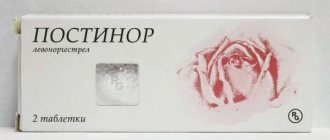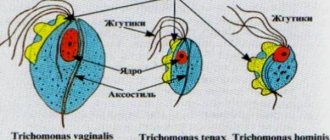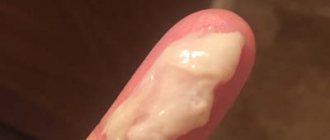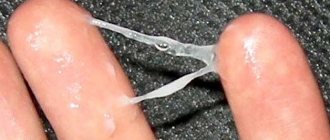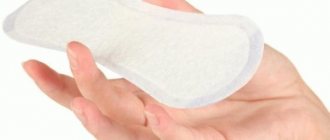- Federal State Institution of Science "Central Research Institute of Epidemiology" of the Federal Service for Surveillance in the Sphere of Consumer Rights Protection and Human Welfare.
- Institute for Complex Problems of Restoring Human Reserve Capabilities.
- ACADEMY OF FAMILY AND PARENTAL CULTURE “CHILDREN’S WORLD”
- Within the framework of the national program for demographic development of Russia
- SCHOOL FOR FUTURE PARENTS “COMMUNICATION BEFORE BIRTH”
Antiseptic properties of the drug
Pharmacists produce Miramistin in the form of an ointment, spray and solution for topical use.
The medicine is poured into polyethylene bottles equipped with a spray nozzle or a special pump. The volume for home use of the drug is 50, 100, 150 and 200 ml. In hospital settings, doctors use 500 ml containers. The instructions for use of Miramistin state that the active substance is a broad-spectrum antiseptic. It effectively eliminates gram-positive and gram-negative bacteria, antibiotic-resistant microbes, aerobic and anaerobic infections, as well as multidrug-resistant hospital strains.
In gynecology, Miramistin is used due to its antifungal properties. The drug has a detrimental effect on ascomycetes of the Aspergillus and Penicillium families, dermatophytes, strains resistant to chemotherapy, as well as yeast and yeast-like fungi, the activity of which leads to vaginal dysbiosis and thrush.
When treating thrush with Miramistin, the active component acts locally. It does not enter the body because it is not absorbed by the skin and mucous tissues and is not transmitted to the systemic bloodstream.
Miramistin during pregnancy and lactation against thrush
Due to the insignificant absorption properties of the drug and the absence of a general systemic effect, Miramistin is allowed to be used during pregnancy and lactating women. The drug does not have embryotoxic or teratogenic effects on the developing organism. Using during lactation, you can irrigate with a spray or make applications with Miramistin on the nipples of a nursing woman. If an infection is suspected, thrush can be treated with Miramistin during pregnancy without worrying about the consequences.
Miramistin acts as a leading drug when many are contraindicated. Changes in hormonal levels in a pregnant woman reduce the body's protective functions. Using the drug for prophylactic purposes at the first characteristic symptoms of thrush prevents the development of pathogenic microorganisms. The doctor decides how long the course of treatment will last after examining the patient. During therapy, you should wash yourself properly and use special intimate hygiene products without soap.
Effects of treatment with thrush
- Nail diseases
- Fungal infections
- Ingrown nail
- Hematoma formation
- Nail splitting
Miramistin's ability to inhibit fungal flora allows the antiseptic to be perceived as an effective remedy for candidiasis in women. Douching with the solution quickly brings relief. In the reviews, some write that improvement in well-being occurs after the first procedure using Miramistin.
What effect can be expected from treating thrush with this drug:
- Antipruritic - the medicine quickly eliminates discomfort.
- Antimycotic - the components of the solution suppress fungi without harming the entire body.
- Regenerating - the product heals ulcerated mucosa and restores normal microflora in the vagina.
The first result of using Miramistin for thrush occurs on days 1–2 of treatment. But you cannot count on relief; the course begun must be completed, otherwise a relapse will occur. The duration of admission is short - only 6-7 days.
For oral candidiasis, Miramistin is also prescribed. The drug is diluted with water 1:1 and rinsed with mouth. Other treatment options are irrigating the cavity with a spray and wiping the tongue and inner surface of the cheeks with a swab moistened with an antiseptic.
Treatment of thrush in women
A woman can independently diagnose the presence of thrush (vulvovaginal candidiasis) by noticing certain clinical manifestations of the disease. The disease is characterized by:
- itching in the perineum and inner thighs;
- burning after urination or sexual intercourse;
- flaky, curd-like discharge of white color with a sour-milk odor.
Symptoms of candidal colpitis intensify with increased physical activity, water procedures, sexual intercourse, and after menstruation. The feeling of discomfort disrupts sleep, limits social activity and sex life. Sometimes a deterioration in general health is observed.
The following reasons may be the reason for the manifestation of Candida fungus activity:
- infection through sexual contact with a carrier of pathogenic flora;
- long-term antibiotic therapy;
- changes in hormonal levels during pregnancy, menopause;
- errors in the diet (an abundance of sweets and flour reduces the acidity of the vaginal environment);
- tight-fitting synthetic underwear;
- use of hormonal contraceptives or steroid drugs;
- presence of diabetes mellitus;
- anal-genital sexual intercourse;
- failure to comply with personal hygiene rules.
Thrush may be present against the background of serious sexually transmitted diseases. Determining the pathogen through bacteriological culture analysis requires time and financial costs. An alternative option is to treat thrush with Miramistin.
The form of use of the drug determines its external use in the form of irrigations, applications, treatment of tampons (turunda).
Miramistin for thrush is used as an active antimicrobial drug with antifungal, antibacterial and antiviral properties.
Selective effects on pathogenic flora, immunostimulation and wound-healing properties of Miramistin allow it to be used to accelerate epithelization and regeneration of the vaginal mucosa. Self-treatment of thrush is common among women. However, the insidiousness of the disease is that its clinical manifestation can hide more serious pathologies. A visit to the gynecologist is a mandatory procedure from the moment the first symptoms of the disease appear. Only a specialist can give a qualified answer to questions about how to treat thrush and how to use an antifungal drug.
Is it possible to cure thrush with topical application only? To get an affirmative answer, you need to analyze the following factors: general analysis of flora, stage of the disease, general physical condition, individual characteristics, and more.
In case of severe fungal infection, the use of the drug in combination with systemic antibacterial and antifungal therapy is required. The use of Miramistin for thrush in uncomplicated cases guarantees recovery. Before starting therapy, you must read the instructions for the drug.
Release forms
Miramistin is available in the form:
- spray (for irrigation of affected surfaces and cavities, douching);
- solution (for applications and processing tampons);
- ointments (for treating the affected area and impregnating the turunda).
Miramistin in the form of an ointment is used in advanced cases that require delicate treatment for a long time. Turundas soaked in ointment are inserted deep into the vagina. Additionally, lubricate the genital area with ointment to prevent the spread of the fungus. The ointment is used daily in the first days of treatment, then moves to the second phase (2 times a week).
Miramistin in the form of a spray is used for superficial treatment of the skin (genital area) not only with a confirmed diagnosis of candidiasis, but also for preventive purposes (to prevent infection as a result of injury). The medicinal spray eliminates mycosis of large perineal folds, candidiasis of the skin and vaginal mucosa. It can be used for chlamydia, trichomoniasis, and gonorrhea concomitant with thrush. It also helps in treating purulent vaginal wounds, postpartum injuries and infections. Thanks to the convenient urethral nozzle, you can irrigate the urethra. The spray used after casual sexual intercourse prevents infection with trichomoniasis, syphilis, and genital candidiasis. The procedure should be carried out no later than 2 hours after the act. The use of Miramistin for candidiasis in the form of a solution is indicated in cases where prolonged exposure to the drug is required. Gauze wipes are moistened with Miramistin solution to apply applications to the site of inflammation. Impregnated turundas are used for surgical interventions, for example, when treating drained cavities. Tampons soaked in the solution are used intravaginally to normalize vaginal microbiocenosis after active antibiotic therapy. Daily douching with Miramistin at night for a week allows you to treat thrush at home. Douching is performed lying down, carefully inserting the nozzle so as not to injure the urethra. The bactericidal effect of the drug even affects resistant organisms.
The course of antifungal therapy depends on the degree of fungal infection, general and local immunity, concomitant genitourinary diseases, and individual characteristics of the body. Severe forms of the disease are treated comprehensively, supplementing therapy with systemic antifungal and antibacterial drugs (Futsis, Fluzak, Nystatin, Clotrimazole). Miramistin enhances the effect of antibiotics. It is possible to use Miramistin together with other topical agents (Klion D-100, Terzhinan, Macmiror, Pimafucin in the form of suppositories and vaginal tablets).
Both sexual partners should be treated for a mixed infection at the same time. Otherwise, relapses of the disease are possible. Men should clean the genital area after every sexual intercourse. The use of general antifungal drugs and antibiotics by a partner increases the chances of recovery.
After treatment, you must not urinate for 2 hours. The symptoms of discomfort in the form of burning and tingling go away on their own.
What else do we know about candidiasis?
Candidiasis on the skin of the genital organs most often occurs in females. Candidiasis of the genitourinary system (thrush) manifests itself in the form of a solid white coating. The affected areas with thrush are painless; pain may appear if cracks appear or plaque thickens. With candidiasis, the following symptoms (skin fungus) appear:
- swelling and redness of the genitourinary system, spots on the skin (fungus can cause any irritation);
- in case of hypothermia, before and after menstruation, burning and itching worsens in the evening;
- pain with erosion and cracks;
- white discharge in the form of a curd consistency, with an unpleasant sour odor;
- pain and burning when urinating (sharp and severe pain in case of deep mycoses).
Candidiasis of the genitourinary system (another name is urogenital candidiasis). There are two types of fungi that affect the skin, manifesting mainly in the form of vulvovaginitis in women and balanitis in combination with urethritis in men.
Thrush of the mucous membrane of the skin (candidiasis) can appear regardless of gender and age, in the form of a white coating in continuous or isolated areas. As a rule, areas affected by white plaque are painless.
In the case of the formation of plaque compactions, as well as the formation of small cracks, minor pain may occur. Maceration of the skin, itching sensation in the anal area, and redness appear with thrush.
A woman can suffer from vaginal candidiasis, either with one symptom of infection or several symptoms at once. In women, these symptoms are most often observed as follows:
- With thrush, the most unpleasant and common symptom is severe itching and acute burning in the genital area, sometimes it is so strong that it causes shock and shock;
- There is severe redness on the surface of the skin of the external genitalia;
- A sensation of pain may occur if the delicate skin and mucous membrane of the vagina turns red and then deep cracks appear;
- Any healthy woman experiences a small amount of white vaginal discharge. But when thrush appears, the white discharge increases and the white color turns into a curd mass that has no odor;
- When urinating, severe pain appears, urination gets into charged areas of the mucous membrane, creating an acute burning sensation;
- Since complications are observed in the mucous surface of the genital organs, urination is also impaired. And during sexual intercourse, discomfort and severe pain are felt.
A week before menstruation, symptoms of thrush begin to appear in any healthy woman. The symptoms of thrush are much stronger in women who are predisposed to allergies. In the evening, itching and burning intensify, which intensifies after taking baths and often interferes with sleep.
What does fungus look like on the skin? If white discharge bothers you, then any woman diagnoses herself with thrush. But, there is no need to worry, since every healthy woman produces white discharge depending on the period of the menstrual cycle.
These discharges are colorless and odorless. Even when you have thrush, the discharge is white, but curd-like, thick and has some kind of smell; sometimes the discharge is gray or green. Having all these symptoms of the disease does not mean that it is thrush.
These symptoms may occur with other diseases - gonorrhea, trichomoniasis, genital herpes, bacterial vaginosis and ureplasmosis. In most cases, thrush is accompanied by infections and therefore it is necessary to specifically get tested for all the symptoms of thrush and infection. A visit to the doctor will determine the cause of thrush using special tests.
Vulvovaginitis
The disease, namely a fungal disease that is most common in the modern world, is called vulvovaginal candidiasis, since many of its achievements create the most favorable conditions for the development of mycoses.
These include pads, they cause a compressive effect which leads to an increase in temperature and humidity, which causes a change in the structure of the skin in the upper layers, synthetic (or any other non-natural) underwear.
With vulvovaginitis, a cheesy discharge appears on the surface and from the genital tract, lesions with whitish spots, burning and itching appear. Severe redness and the formation of blisters with clear liquid and deep mycoses may also be observed.
What causes skin fungus? Vulvovaginal candidiasis is a disease of our civilization. This is due to the fact that the modern population of the planet uses modern advances in science and more.
In view of human nature, his thinking and attitude to modern technologies, he does not always soberly assess the capabilities of the means he uses. All this leads to the fact that we ourselves create favorable conditions for the development of fungal diseases.
What applies to these products and achievements: feminine hygiene pads, tampons, diapers, unnatural underwear, jewelry made from low-quality materials (meaning piercing), the use of various kinds of skin care products (which have not passed medical tests).
Diffuse swelling and lesions with the presence of white dotted plaque usually appear with the development of candidal vulvitis. When a pinpoint plaque is removed, an erosive surface with various damage appears underneath it.
Treatment of thrush in pediatrics
Thrush is a common occurrence at an early age. The imperfect immune system of infants is not able to reflect the action of pathogenic flora. Infection occurs when fungi enter the child’s oral cavity as a result of feeding (untreated dishes, pathogenic flora on the nipples), when an infected person passes through the birth canal, as well as when personal hygiene rules are not followed. Thrush in infants is especially severe. The child refuses food. Constant pain resulting from damage to the oral mucosa is physically exhausting, disturbing the peace and general condition of the body. The Miramistin spray used brings a noticeable improvement, blocking the proliferation of microbes in the oral cavity.
Miramistin spray is also effective in the treatment of concomitant herpesvirus aphthous stomatitis. Thrush and aphthous stomatitis often develop simultaneously and require emergency care. Otherwise, against the background of activated flora, sepsis may occur. In the treatment of this pathology, in addition to Miramistin, irrigation of the pharynx with Methyluracil and sea buckthorn oil is prescribed. Methylene blue solution is also effective. You can supplement complex treatment with vitamin B12 (a few drops of the vitamin are dripped under the tongue after irrigation with Miramistin). In severe cases, when the infection develops rapidly, systemic antifungal drugs (Nystatin, Fluconazole) are included in general therapy. The white plaque that forms during candidiasis in children disappears on its own during treatment. It is not recommended to remove films. This leads to even greater injury to the oral mucosa. Timely initiation of treatment using Miramistin guarantees a positive result.
Rules for using the product
The nozzle makes the product easy to use. To treat thrush at home with Miramistin, women are recommended to douche with the drug for 5–7 days. It is more convenient to do the manipulation while lying down, carefully inserting the nozzle into the vagina and injecting no more than 10 ml of solution in one session.
To prevent candidiasis, a sexual partner (husband, boyfriend, just a friend for intimate relationships) can inject the solution through a nozzle into the urethra while standing. At first, Miramistin causes a burning sensation, but you need to endure it, because...
Nursing women and expectant mothers suffering from thrush can safely use Miramistin during pregnancy. During thorough studies of the drug, scientists found that the antiseptic does not cause a teratogenic or toxic effect for the baby.
This means that the treatment of the mother will be safe for the pregnant fetus or baby. However, experts advise pregnant women to be careful when treating vaginal candidiasis and not to overuse the medicine. Otherwise, mothers may experience allergic reactions to the medication.
Let us consider in detail how to use different types of Miramistin for thrush in women:
- Ointment. It is advisable to use this form in case of advanced candidiasis, when ulcers appear on the labia. The product reduces itching and irritation and heals minor injuries on the skin. Apply the ointment in a thin layer without rubbing into the genitals.
- Spray. For thrush, it is prescribed for vaginal irrigation. The dispenser attachment allows you to carry out the procedure carefully and without overdosing the medicine. The gynecologist will tell you how many times a day to inject Miramistin into the genitals. The design of the sprayer may vary depending on the volume of the bottle. But this does not make therapy difficult. All attachments are convenient to use.
- Solution. Following the instructions, before using the Miramistin bottle for the first time, you must activate the nozzle and inject the required amount of medicinal liquid into the vagina. In a few minutes you can get up. Since the substance will leak out, it is necessary to protect the laundry with a pad. Before douching with Miramistin, it is useful to wash the perineal area with decoctions of calendula and St. John's wort. To get rid of thrush using an antiseptic, you can also place a tampon soaked in medicine in the vagina and treat the skin in the intimate area with Miramistin, where discharge from the genital tract enters.
To obtain good results in getting rid of thrush with Miramistin, the drug must be used with the first signs of the disease, for example, when the itching has just begun to bother you and there is no cheesy discharge yet.
For men, this remedy will serve as an excellent way to prevent candidiasis if his partner is undergoing treatment. For this purpose, after each intercourse, a man must lubricate the genitals and inner thighs with Miramistin.
During lactation and pregnancy, Miramistin is allowed to be used at any time. Traditionally, mothers are prescribed a solution for external treatment of the problem area of the body. For douching, the drug used can be used in the postpartum period.
There are no contraindications to treatment with Miramistin for various diseases. Doctors only warn against its use in case of hypersensitivity to the active component of the medication.
Miramistin is well tolerated by the body and has many advantages:
- Atoxicity.
- Ease of use.
- Over-the-counter and free sale.
- No allergies or irritation in the perineum.
- Wide range of application - in addition to thrush, the product treats purulent-inflammatory pathologies of the musculoskeletal system, burns, purulent wounds, urethritis, ENT and dental diseases (sinusitis, tonsillitis, tonsillitis, periodontitis, gingivitis). Miramistin is also suitable for the prevention of STDs.
Indications
Miramistin is used to treat a huge number of pathological conditions. With its help, dermatological diseases such as streptoderma, dermatomycosis, candidomycosis (including mucosal candidiasis) are treated. It is also indicated for the treatment of wounds, burns, bedsores, and ulcers.
The drug has found wide use in the treatment of urogenital infections. In particular, it is used for the prevention of sexually transmitted diseases and complex treatment of urethritis. For preventive purposes, Miramistin is used before childbirth and in the postpartum period.
This remedy is also used in dentistry for gingivitis, stomatitis and other infections of the oral cavity. "Miramistin" is also effective for throat diseases, acute otitis media, and sinusitis.
Feedback from users
Elena, 23 years old, Istra:
When I first got thrush, I didn’t immediately understand that it was happening. I became concerned when the itching became unbearable. The gynecologist diagnosed candidiasis and prescribed a solution with Miramistin. My scabies, burning sensation and abnormal discharge disappeared within 3 days of starting treatment. I used the drug for a week in total. A repeat smear gave a negative response to fungal flora.
Ekaterina, 35 years old, Taganrog:
The thrush developed by wiping the intimate area with a scented wet wipe. At first, the genitals turned red, then they began to itch, and after a couple of days strange discharge from the vagina appeared. On the advice of the doctor, I applied lotions with Miramistin - small cotton swabs were generously moistened with the solution and inserted deeply into the vagina. I did the procedures early in the morning and after lunch, when there was nothing to do around the house. You need to lie with the tampon for 1–2 hours. The doctor confirmed my recovery on the 8th day, when I came for a follow-up appointment.
Yana, 40 years old, Lipetsk:
Candidiasis bothered me 3-4 times a year and I treated it, one might say, continuously. After talking with my gynecologist, I realized that the reason for this was not only weak immunity, but also a love for sweet flour products. To check whether thrush will continue to bother me, the doctor recommended following a diet, i.e., removing unhealthy sweets from the diet, taking multivitamins and douching with Miramistin for a week. An integrated approach gave excellent results. I have not suffered from candidiasis for two years now.
Rimma, 20 years old, Moscow:
I often get thrush due to HIV infection, so I always keep Miramistin in my medicine cabinet. I use the medicine as soon as itching appears. It quickly relieves the symptoms of the fungus and prevents the disease from developing further. I consider Miramistin to be an effective remedy, because it helps me from the first use.
Margarita, 44 years old, Simferopol:
Miramistin is an excellent medicine against thrush. However, do not rush to interrupt treatment after feeling relief. Always follow through with therapy. When I used this product for the first time, I was delighted with the quick results and stopped douching on the 3rd day. As a result, candidiasis worsened, and I had to not only carry out local procedures, but also take pills. The therapy was successful, the fungus in the groin no longer bothers me. Do not repeat my mistakes, treat thrush immediately and for as many days as the gynecologist says.
Tags: white, selection, miramistina, after
About the author: Admin4ik
« Previous entry
General recommendations
Any infectious disease requires adequate treatment, carried out under the supervision of a specialist. Self-medication of thrush is unacceptable. A timely diagnosis will increase the chances of recovery. An individual approach to treatment will make it possible to assess the situation realistically. You can prevent infection by following certain rules:
- maintaining personal hygiene (using cosmetics for intimate hygiene containing lactic acid - Lactacid, Epigen, etc.);
- balanced diet (do not abuse easily digestible carbohydrates);
- use of linen made from natural fabrics, “breathable” sanitary pads;
- lack of casual sex;
- rational use of hormonal and antibacterial drugs.
Taking care of yourself and your health significantly reduces the likelihood of infection.
Read
Also:
- Polygynax - suppositories for thrush during menstruation and pregnancy
- Treatment of candidiasis: thrush in the first trimester of pregnancy
- Clotrimazole - ointment for thrush for pregnant women
- TOP 8 most effective drugs for thrush for women
- Treatment of thrush with chlorhexidine, instructions for use
- How can you get thrush, reasons for its appearance after sex
Instructions for use of Miramistin
Miramistin solution is used as follows:
- To treat trauma pathologies, burns and wounds, surfaces are treated with a solution of the product, aseptic dressings are applied, which are irrigated with a solution of miramistin. The frequency of such manipulations should be at least 3-4 times a day for the entire time it takes to recover. Sometimes, simply wetting the wound surface several times throughout the day is enough.
- In gynecology: for irrigation of the mucous surface of the vagina and cervix before the onset of the birth process, for baths after gynecological examinations, as well as for the healing of ruptures and postpartum surgical traumatic conditions. Treatments are carried out at least 2 times a day for a week; in some cases, treatment may last a little longer.
- It is also used during cesarean section to treat the surgical wound on the uterus and wash its inner surface.
- To prevent the occurrence of genital infectious pathologies. It is advisable to use Miramistin solution no later than 2 hours after unprotected sexual intercourse. Before treatment with the drug, it is necessary to carry out a set of hygienic procedures in relation to external female organs. Next, 1-2 ml of the contents of the bottle are used for external washing of the vagina, then about 10 ml of the product is injected inside for 3 minutes. You can also wash the skin of the inner thighs and buttocks with the solution. After using the medicine, it is advisable not to go to the toilet “little by little” for 1.5-2 hours.
- In urology: prescribed as part of complex treatment for various forms and courses of cystitis. To do this, miramistin, diluted with saline in a 1:1 ratio, is injected into the bladder cavity. Such procedures should be repeated at least 5 times.
- Vaginal tampons are also used, which are irrigated with miramistin solution. Tampons are inserted deep into the vagina and left there indefinitely. It is advisable to change such tampons several times throughout the day for 5-7 days.
- In otolaryngology: to cure sinusitis, it is recommended to rinse the paranasal sinuses with the required amount of solution until the exudate is completely washed away; for inflammation of the outer ear, turunda is soaked in the medicine and placed in each ear for half an hour three times a day. The duration of the course of treatment should be at least one week. For otitis media, miramistin in the form of drops is instilled into each ear, 2-3 drops 2 times a day for at least 10 days.
- Recommended for disinfection of the oral cavity after surgical interventions , as well as for the treatment of various forms of laryngitis, pharyngitis, and tonsillitis. To do this, it is recommended to rinse your mouth repeatedly with Miramistin solution every day. The amount of the drug should be at least 15 ml per rinse.
- In ophthalmology: for the treatment of conjunctivitis, blepharitis, keratitis and other diseases, eye drops are instilled 3-4 times a day for 7 days. For purulent folliculitis, apply a bandage to the affected eye. To do this, you need to moisten a gauze swab in the miramistin solution, squeeze it slightly and apply it to the closed eye for 45-60 minutes. For a speedy recovery, repeat this procedure at least 5 times. To use the drug in the form of a spray, you should first remove the cap, then remove the spray nozzle from the box and attach it to the spout at the top of the bottle. After this, you need to activate the sprayer by double pressing it.
- For the treatment of acute tonsillitis with a spray: for children over 3 years of age, one spray of spray per procedure is sufficient; children over 6 years old need 2-3 sprays of the drug; adolescents over 12 years of age and adults – at least 4 sprays. Also in such cases, children use a rinsing solution: children aged 3-6 years need 4-5 ml of miramistin, which is mixed with water in a 1:1 ratio; for children aged 6-12 years – 8 ml of a regular solution of the drug will be enough; children over 12 years old – 10-12 ml per rinse.
- inhalations have a good effect , which are prescribed to children for residual cough, chronic bronchitis, and in the complex treatment of pneumonia. To do this, you need 4-5 ml of 0.01% Miramistin solution per procedure. For children under 12 years of age, the drug is mixed with an isotonic NaCl solution in a ratio of 1:1 or 1:2.

